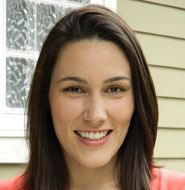The AuD program is a four-year, full-time course of study.
Fall
- Anatomy and Physiology of Speech and Hearing
- Audiology Staffing / Clinical Skills
- Clinical Audiology I
- Electroacoustics
- Hearing Devices I
- Observation and Practicum
- Typical Language Development*
Spring:
- Audiology Staffing / Clinical Skills
- Auditory Neuroscience
- Auditory Perception
- Clinical Audiology II
- Hearing Disorders
- Observation and Practicum in Audiology
- Research Seminar
Summer
- Counseling for Audiology
- Pharmacology
- Practicum in Audiology
Fall
- Audiology Staffing / Clinical Skills
- Electrophysiology I
- Hearing Devices II (Cochlear Implants)
- Pediatric Audiology
- Practicum in Audiology
- Sign Language I*
Spring
- Audiology Staffing / Clinical Skills
- Practicum in Audiology
- Hearing Devices III (Pediatrics)
- Speech and Language Disorders*
- Statistics and Research Methods
- Vestibular Assessment
Summer
- Electrophysiology II
- Practicum in Audiology
Fall
- Audiology Staffing / Clinical Skills
- Business Practices
- Capstone Project Seminar
- Genetics
- Rehabilitative Audiology
Spring
- Audiology Staffing / Clinical Skills
- Capstone Project
- Hearing Conservation
- Practicum in Audiology
Summer
- Clinical Externship
Fall and Spring
- Clinical Externship
- Counseling Parents of Children who are Deaf/Hard of Hearing
- Early Intervention for Children who are Deaf/Hard of Hearing
- Geriatric Audiology
- Sign Language II
- Sign Language III
*These courses can be waived if an equivalent was completed prior to enrollment.
PACS offers a collaborative environment for students, with a boundless supply of resources and opportunities. The program provides diverse clinical experiences for students, enabling them to enter the professional field with confidence and well-developed knowledge and skills.
Veronica Richter, AuD (2014)
audiologist, Starkey Hearing
